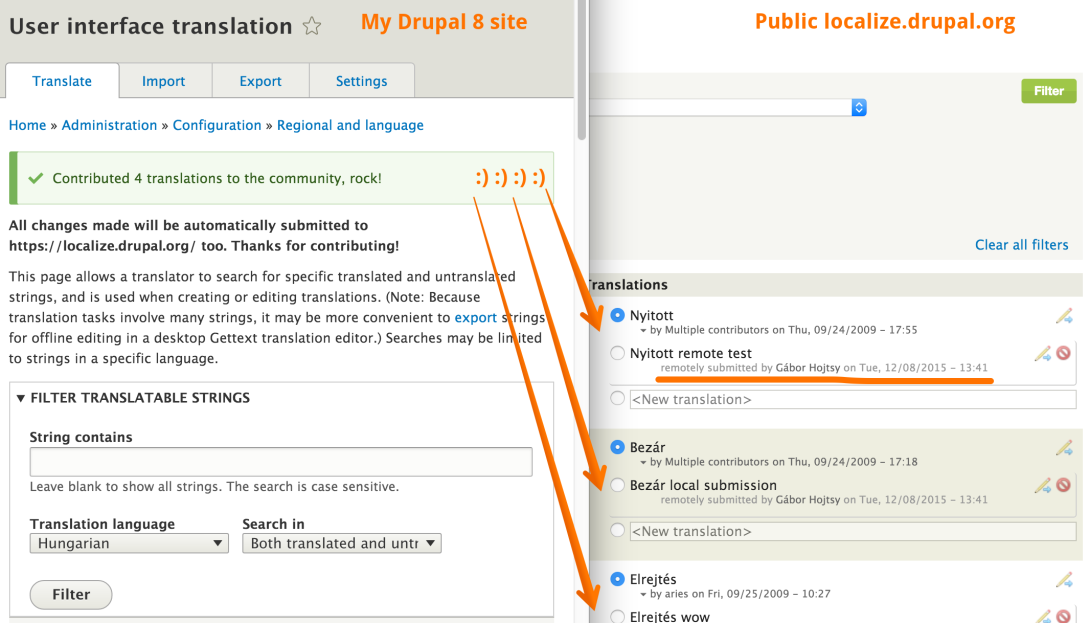Drupal 8 makes huge-huge strides in terms of reaching more people on the globe by making everything translatable and automating translation downloads and updates from the community among hundreds of other improvements. What about software translation contribution though? We did not make progress on that front in core, but it is not very hard to do as a contributed module.
The Localization client module is available for Drupal 7 and 6. It does two things: it provides an alternate nicer user interface to translate Drupal (modules) and it allows you to contribute to the community right from that interface. Drupal 8 already improved the built-in translation interface considerably, so it made sense to start with porting the contribution functionality and integrate that first. The initial Drupal 8 port of that is available for your testing now!
To try it out:
- Join the https://localize.drupal.org/ team you want to contribute translations to (if not already). For testing, you can use the test language. Or better: just test with good translation suggestions so your reviewers will be happy.
- Grab the Drupal 8.x-1.0-alpha1 version of Localization client. Install the Localization Client Contributor submodule only (you would not be able to install the other one yet anyway).
- The module comes with contribution enabled by default, but you need to set your API key so localize.drupal.org can identify you. Edit your user account on your site and enter the API key there. (Follow the instructions on the API key field on your user account edit screen).
- If you want to grant other people to contribute, grant them the Contribute translations to localization server permission to contribute and tell them to enter their respective API keys on their user profiles.
- Now when you go to the built-in software translation UI it will tell you that all things changed will also be submitted to localize.drupal.org and the submit button will reflect that too, to make it super-clear. If you did not set your API key yet, it will tell you to do that instead.
- Once submitting the translation changes, it will let you know how many strings were successfully submitted and any errors encountered as well. All messages are also logged for later review.
The resulting effect of submitting changes locally are visible remotely by the community as well, yay!

Happy translating! See known issues and report more at https://www.drupal.org/project/issues/l10n_client?version=8.x Further improvements are of course possible, issues are welcome!